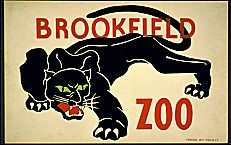| Entries |
| F |
|
Federal Art Project
|

|
In Chicago, Cahill's liberal notions met challenges from right and left. The first local director, painter and gallery-owner Increase Robinson, was more conservative and elitist. Her insistence on high professional standards meant fewer artists could qualify for the project. Whereas Cahill never sought to influence subject matter, Robinson specified “no nudes, no dives, no pictures intended as social propaganda.” She also avoided hiring members of the Artists Union and neglected two key parts of the national project, children's classes and community art centers. After the union filed charges against Robinson with Cahill in 1938, she was removed. The subsequent directors, George Thorp and Fred Biesel, proved more sympathetic to a broader range of artists and programs. In 1940 the project came under fire again when the Chicago Tribune pronounced much of the art “incompetent and ugly” and permeated with “communistic motifs.”
The FAP's legacy endures in Chicago. Numerous works remain in schools and other public buildings, and the South Side Community Art Center, the only surviving FAP center in the country, continues to serve the city's African American community.
The Encyclopedia of Chicago © 2004 The Newberry Library. All Rights Reserved. Portions are copyrighted by other institutions and individuals. Additional information on copyright and permissions.